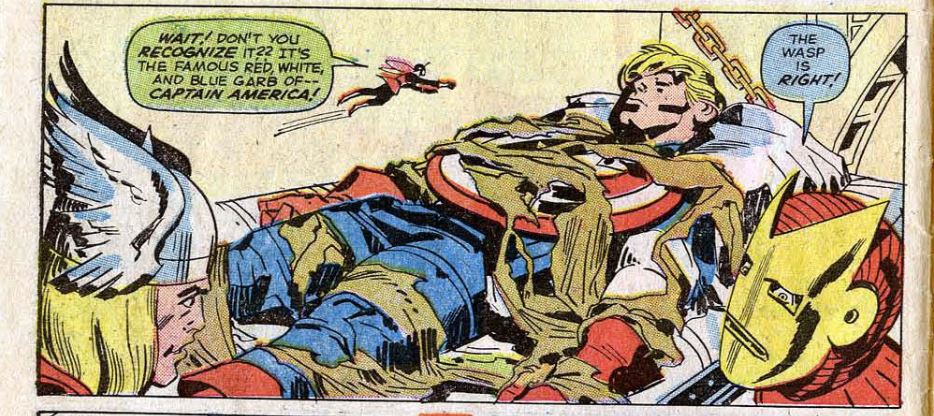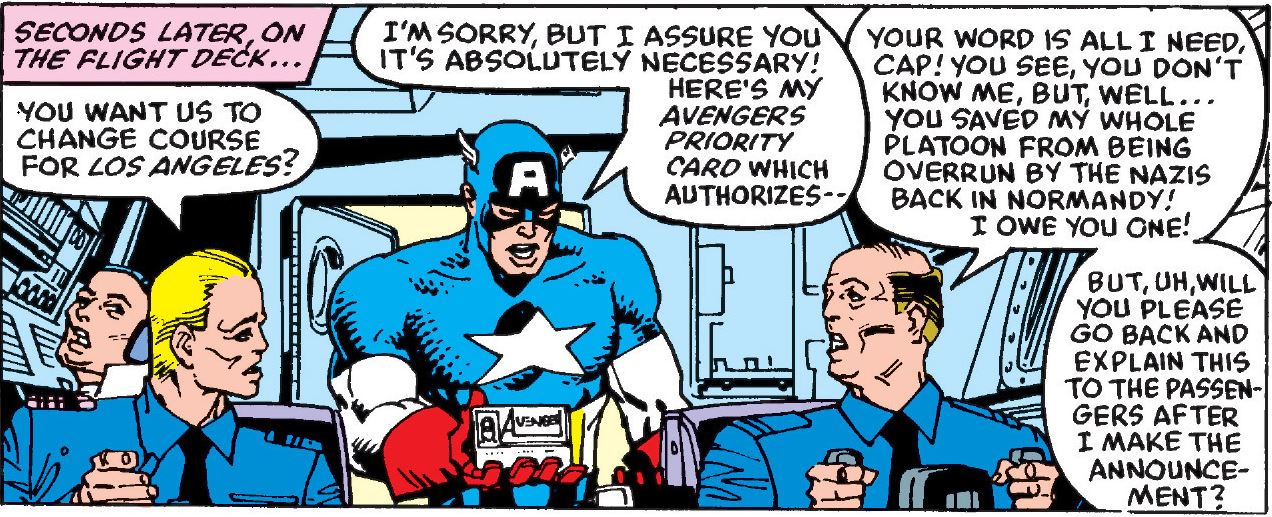America’s favourite comics shop owner Mike Sterling incidently touches on something I’ve been thinking about recently in his post on how The Justice Society managed to stay so young:
This could have been the Steve Rogers/Captain America solution, where a WWII character is taken off the table and “preserved” for an indefinite amount of time, with his revival pushed farther and farther into the future as publishing of the character continues. When Captain America was first revived in the 1960s, he’d only been “gone” for 20 years. Now that we’re in the 2020s, that time he was frozen in the ice is now, what, 60 years? It’s attaching that modern hero “sliding scale” to Golden Age characters.

Which is the difference in having Captain America wake up in the early sixties, twenty years after World War II or in the 21st century. If Captain America is always assumed to have been revived “ten years ago” that means that right now he only woke up in 2012, in Obama’s presidency, his new life younger than the iPhone or Twitter. Even that famous scene in Civil War: Frontline in which Captain America’s ignorance of Myspace is supposed to prove he was on the wrong side had to be retconned into being ignorant about Twitter. (I always found that mildly insulting. Mark Gruenwald had Cap start his own computer hotline all the way back in the eighties, but I assume that, like the time Ronald Reagan turned into a snake, are retconned now too.) You can argue that this is all ephemeral stuff, small details that don’t really matter to the stories, but you’d be wrong.

Because context matters and Steve Rogers returning to a world he’s twenty years or eighty years out of date of changes a lot of things. When Cap originally came back in 1964, he came back to a world in which the nineteen, twenty year old GIs he fought along are now fortysomething family men, settled down in their careers, with their children starting to rebel against the conformist ways in which they had brought them up. Cap would constantly run into ordinary people who knew what the war was like and what he went through, because they themselves had gone through it as well. Even in the mid-eighties, like in the panel above from Secret Wars II #1 Cap could still run into people he had once saved, though they were by now in their late fifties if not early sixties, on the brink of retirement. Have Cap revive in 2012 and he arrives in a world in which most of these men are dead and those who aren’t, are pushing ninety or more, likely stuck in some retirement home. For the vast majority of ordinary people he will encounter, he’s no longer somebody who they knew from having served with him, or even from stories from their childhood, he’s just another historical figure they have no real connection to.
It’s of course understandable that this happened, you can’t keep Captain America or any other Marvel hero tied to the sixties, you need some sort of sliding timescale anchored to the present to keep them relevant, but it is a shame that Cap’s roots have been severed this way. You can still tell good stories about his personal connections to WWII (like this), but the type of story you can tell has changed when most if not all the people he fought along are dead.
Credits: First image from Avengers #4, Jack Kirby (natch). Second image, Secret Wars II #1, Al Milgrom/Steve Leialoha.
No Comments